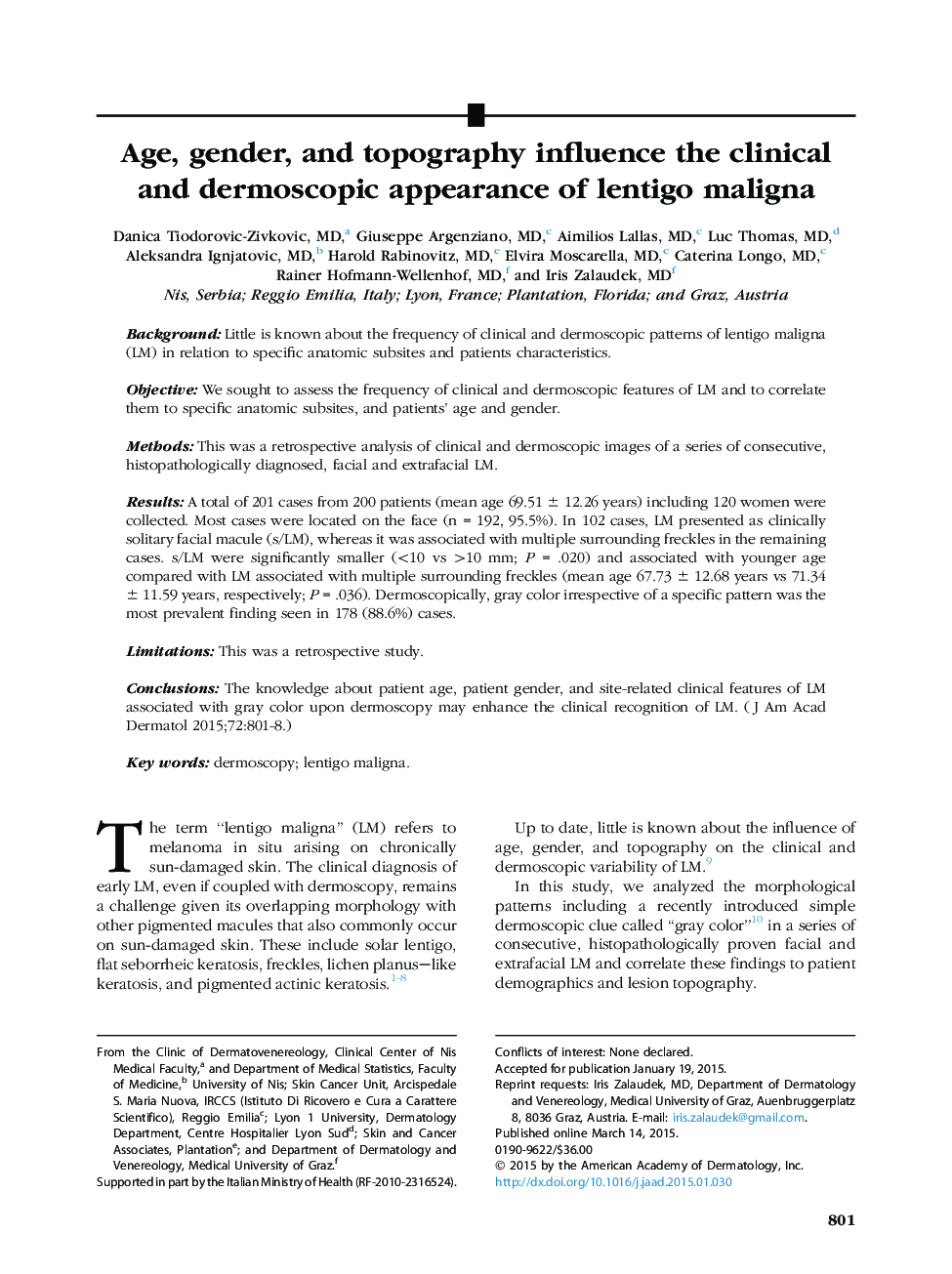| کد مقاله | کد نشریه | سال انتشار | مقاله انگلیسی | نسخه تمام متن |
|---|---|---|---|---|
| 3205078 | 1587523 | 2015 | 8 صفحه PDF | دانلود رایگان |
BackgroundLittle is known about the frequency of clinical and dermoscopic patterns of lentigo maligna (LM) in relation to specific anatomic subsites and patients characteristics.ObjectiveWe sought to assess the frequency of clinical and dermoscopic features of LM and to correlate them to specific anatomic subsites, and patients' age and gender.MethodsThis was a retrospective analysis of clinical and dermoscopic images of a series of consecutive, histopathologically diagnosed, facial and extrafacial LM.ResultsA total of 201 cases from 200 patients (mean age 69.51 ± 12.26 years) including 120 women were collected. Most cases were located on the face (n = 192, 95.5%). In 102 cases, LM presented as clinically solitary facial macule (s/LM), whereas it was associated with multiple surrounding freckles in the remaining cases. s/LM were significantly smaller (<10 vs >10 mm; P = .020) and associated with younger age compared with LM associated with multiple surrounding freckles (mean age 67.73 ± 12.68 years vs 71.34 ± 11.59 years, respectively; P = .036). Dermoscopically, gray color irrespective of a specific pattern was the most prevalent finding seen in 178 (88.6%) cases.LimitationsThis was a retrospective study.ConclusionsThe knowledge about patient age, patient gender, and site-related clinical features of LM associated with gray color upon dermoscopy may enhance the clinical recognition of LM.
Journal: Journal of the American Academy of Dermatology - Volume 72, Issue 5, May 2015, Pages 801–808
